During Thanksgiving, our family decided to do something different. Since our adult children are scattered about the Midwest, we decided to meet in the middle. We rented a place in La Salle county outside North Utica, Illinois, about a 90-minute drive from Chicago. Our real purpose was to be together for Thanksgiving, but we were delighted to discover that we were a stone’s throw from one of the most distinguished state parks in northern Illinois. One with the great natural beauty of its deep canyons shared with a dark history.
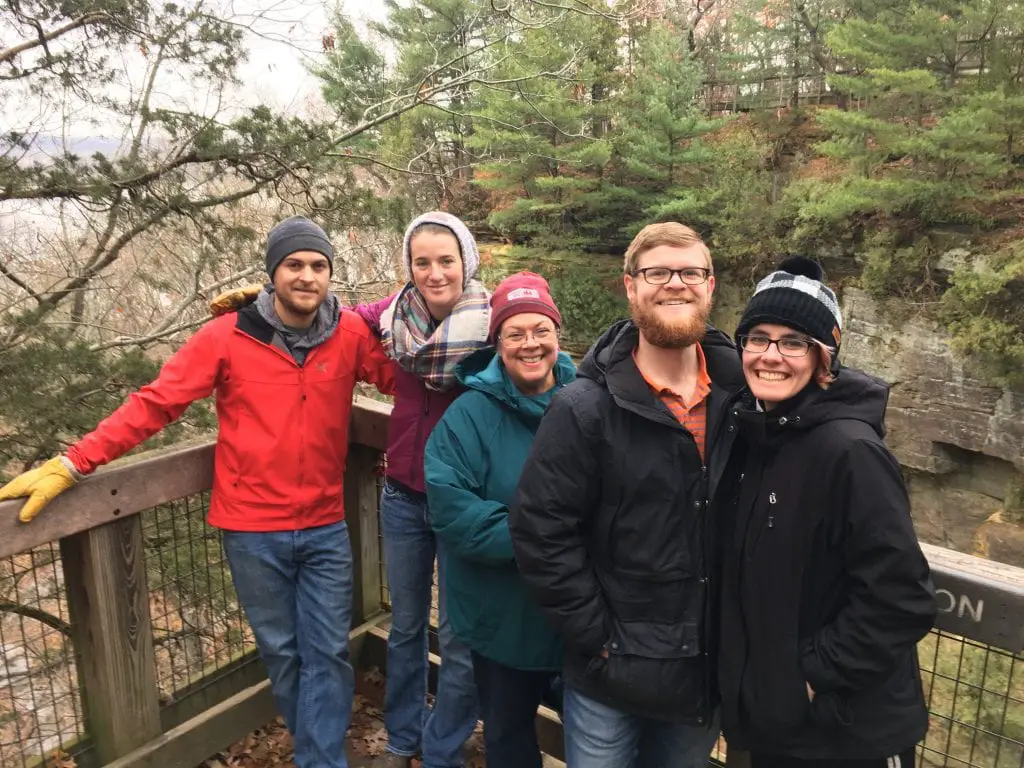
Illinois Starved Rock State Park has been voted the #1 natural attraction in Illinois. The 2,600-acre park has eighteen distinct canyons. Each was carved out of the St. Peter Sandstone by glacial melting and the Illinois River’s ever-persistent water action. The Starved Rock Lodge Visitors Center & Conference Center area parking areas are the trailheads to the rest of the park. They are considered the starting point for guided and self-guided hiking of the various trails and canyons. Its thirteen miles of river trails and canyon trails are well marked, and many are equipped with sets of stairs to safely access the remote bluffs and steep canyons in the park. A Starved Rock trail map is a handy addition to your backpack.
#1 Native History of Starved Rock
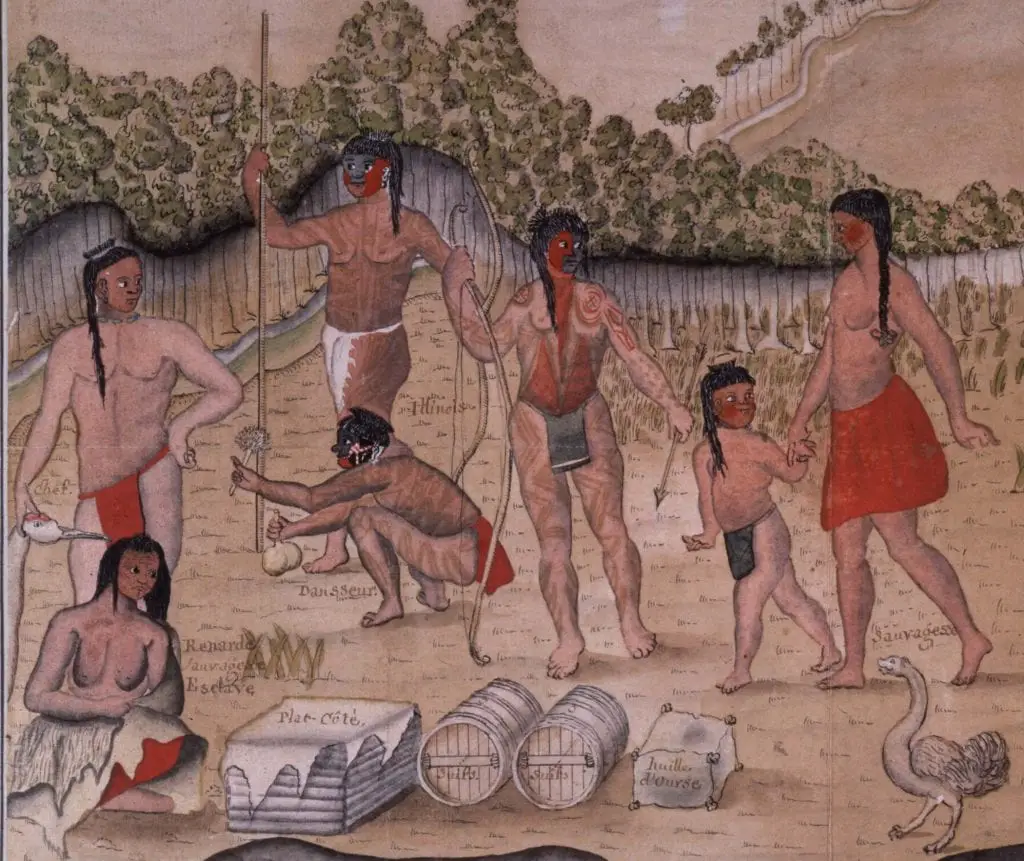
Part of the history of Starved Rock State Park and its surrounding area is in its Native American inhabitants’ legacy. For over 10,000 years, Native American tribes called the area home. Plum Island’s fertile land was an ideal place to farm maize, beans, and other vegetables. The land was also an excellent hunting ground, with bison, turkey, deer, and other animals populating the area. Flocks of wild turkey and deer flourish in the park and can be abundantly seen. In addition, there is ample evidence of beaver activity on trees on trails along the river bank.
#2 The French Explorers at Starved Rock
The French were the first Europeans to visit Illinois Country. Father Jacques Marquette and French explorer Louis Jolliet traversed the area via the Illinois River Valley in 1673. The Illinois River was the French traders’ main trade route until the region became part of the British Empire a century later.

Rene-Robert Cavelier and Sieur de la Salle arrived at Starved Rock in 1680. The French soon built Fort St. Louis on the summit of Starved Rock, which served as headquarters for the French-Indian trade and as a diplomatic center until the early 1700s. Unfortunately, no evidence remains of the French fort on the summit today.
#3 The Legend of Starved Rock
Starved Rock State Park derives its name from a Native American legend of the assassination of Chief Pontiac of the Odawa tribe and leader of the raid and siege of the British Fort Detroit in 1763. In 1769 Pontiac was in Illinois country and was slain by an Illiniwek while attending a tribal council in the state’s southern part. According to the legend, during one of the battles that subsequently occurred to avenge his murder, a band of Illiniwek under attack by a group of Potawatomi (allies of the Ottawa) sought refuge atop a 125-foot sandstone butte. The Odawa and the Potawatomi surrounded the bluff and lay siege until the hapless Illiniwek died of starvation – thus giving the name “Starved Rock.”

As with many legends, there is no direct evidence that this event actually occurred. However, several books were written in the early 1800s, giving accounts to bones scattered on top of the rock. Some of these relics have traveled to Quebec, where they are resting to this day. Likewise, a popular legend is that Pontiac’s body was taken back to Michigan and buried near his childhood home on Apple Island, which lies in the middle of Orchard Lake north of Detroit.
#4 The Beginning of Starved Rock State Park
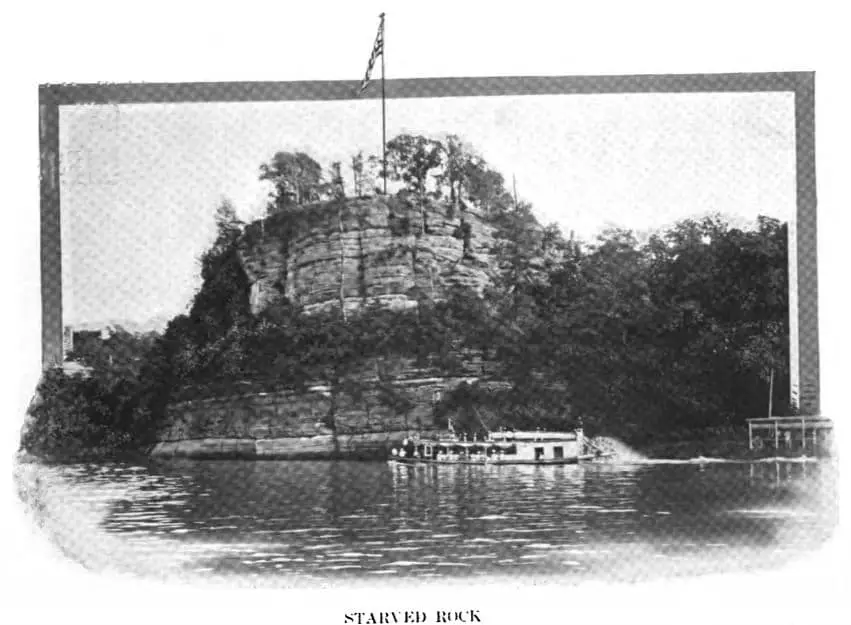
Starved Rock became of Illinois’ first state parks when purchased from private owners in 1911 for $146,000. From 1891 to 1940, a large frame hotel stood at the south bluff base at Starved Rock. There was an artesian fed swimming pool, a dance pavilion, and a concession area.
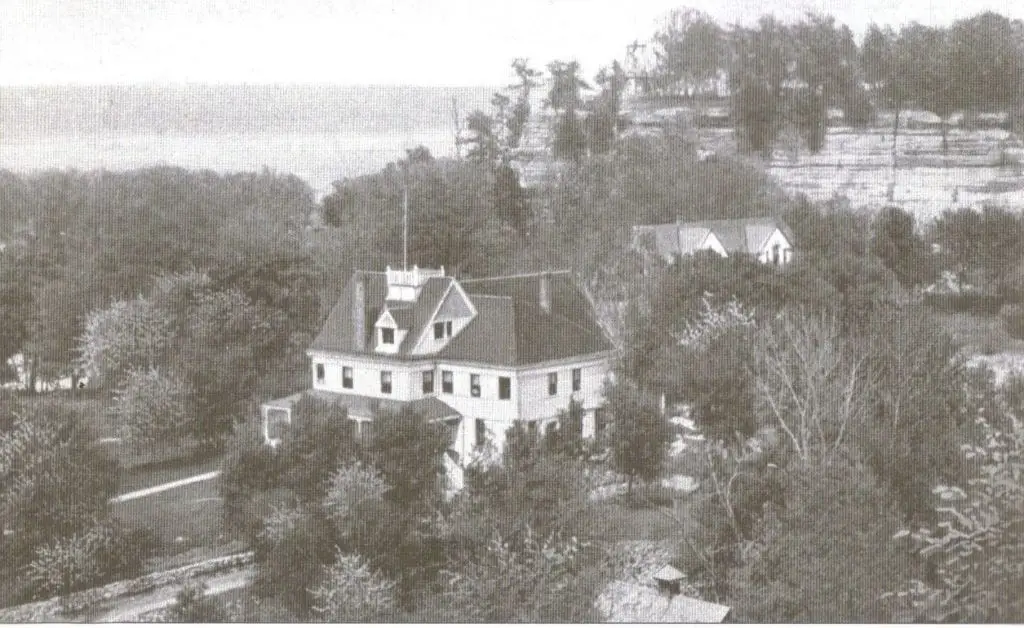
#5 Travel by Rail and Ferryboat to Starved Rock

Visitors coming to the park from Chicago would take the train to Joliet to transfer to an interurban electric railway to the Illinois River. Once there, they would take a ferry boat to cross the river to the park.
#6 Waterfalls in Starved Rock State Park
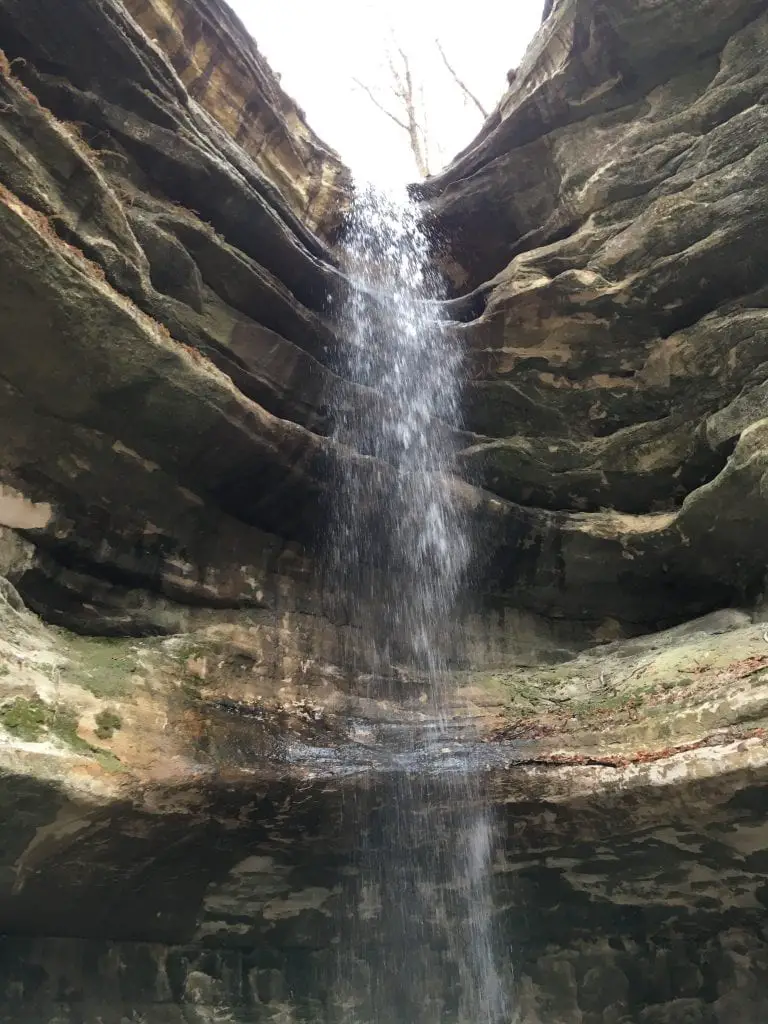
Throughout Starved Rock State Park, most canyons have very tall waterfalls. Still, the most popular lookout points can be found in St. Louis Canyon, French Canyon, Wildcat Canyon, Tonti Canyon, LaSalle Canyon, Ottawa Canyon, and Kaskaskia Canyons. Since the seasonal waterfalls depend on snowmelt and spring rains, the best time to visit the park is the end of winter thaw. A Starved Rock State Park trail map can be downloaded and printed for your own hike planning.
We found the remoteness of St. Louis Canyon one of the best walking trails in the park. The canyon draws few visitors, and it was worth venturing away from the visitor center to check out its sandstone bluffs and vertical walls of moss. At the canyon base, hikers are treated to a wide vista with mini caverns and overlook to explore. The total hike out and back was just under an hour.
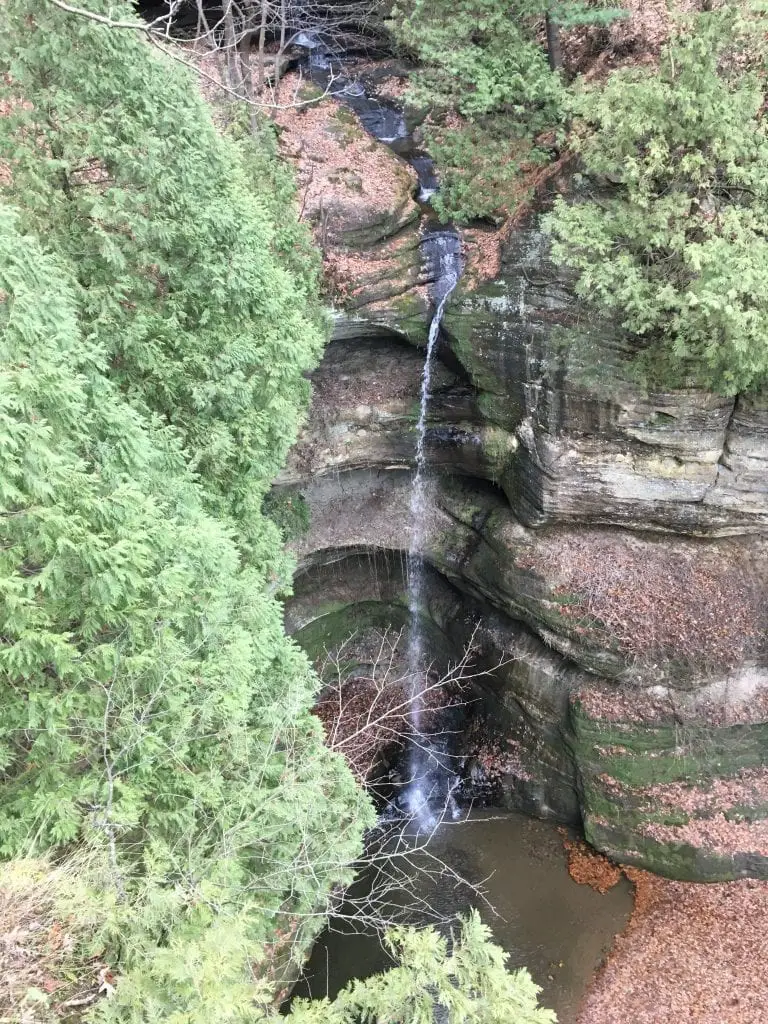
Waterfalls at Starved Rock tend to be seasonal and dependent upon local rain or snowmelt. The best times to view the waterfalls are in the early spring and after heavy rainfall. However, access can be hampered due to washouts of trails.
#7 Canyons and Overlooks at Starved Rock
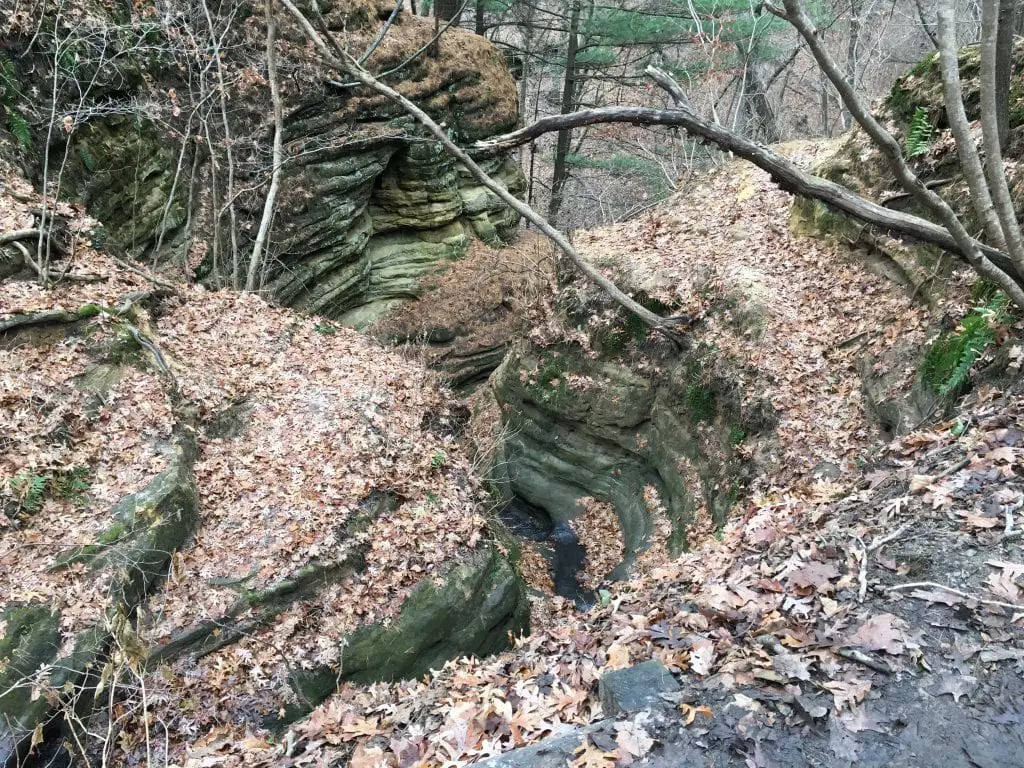
While waterfalls are something many people come to see at Starved Rock, the sandstone canyons and river overlooks are quite stunning to see no matter what the weather. So if you happen to be hiking Starved Rock during a dry season, there are many beautiful views and views of the river throughout the park. One word of caution when hiking at Starved Rock is to stay back from the steep ledges and banks, they are prevalent, and the edges give way easily. Also, use care when taking selfies.
Our only regret is that we did not venture out to the east end of the park. There resides the famous Council Overhang and the Kaskaskia canyon. Its proximity to the Ottawa Canyon makes it worth visiting both. Kaskaskia was named after a Native American tribe that used to live across the Illinois River. Staying on the marked trail is a must in this section of the park. In 2019 a man died after taking a 40-foot fall from the Council Overhang at Starved Rock State Park.
If you’re in the State of Illinois, it’s definitely worth visiting beautiful Starved Rock State Park and the Starved Rock area, if only for a day.
#8 Starved Rock State Park Cabins and Lodge
The Starved Rock State Park Lodge is a good option if you want to remain in the park but don’t want to tent. The Lodge and its conference center, cabins, and restaurant are open all year.
The Starved Park State Park Lodge
There are 69 guest rooms in the old stone-and-log Lodge. Full bathtubs, coffee machines, hairdryers, TV/DVD, heat, and air conditioning are available in hotel rooms. The historic Lodge, erected by the Civilian Conservation Corps in the 1930s, has an architecture that matches national park lodges.
Guests can enjoy the gift store, cafe, lounge, outdoor dining, and entertainment on the veranda while staying at the Lodge. In addition, guests of the lodge have access to an indoor pool complex that includes two saunas, a hot tub, a gated children’s pool, and an outdoor sunning area.
Pioneer Cabins
A total of 21 dog-friendly cabin accommodations (several with wood-burning fireplaces) are located just outside the Lodge, surrounded by towering pines and century-old oak trees. The Civilian Conservation Corps erected these original log cottages in the 1930s. With knotty pine paneling and ancient charm, the rustic ambiance transports you back in time. They are tucked away among towering pines and century-old oaks, only steps from hiking paths and seasonal waterfalls. All year long, it’s a tranquil haven. Unfortunately, no microwaves or refrigerators are available in any of the rooms or cottages.
Sunset Cabins
Sunset Cabins are located on the park’s western edge. Trails are right outside your door in these lovely log cottages. Each cabin is a quad, with four separate, private guest rooms. Each room has its own bathroom and entrance. The lodge rooms have the same amenities as the cabins.
The Restaurant
Breakfast, lunch, and supper are served at the Starved Rock State Par Lodge’s family-style restaurant. A magnificent Sunday brunch, children’s meals, fried chicken, steaks, shellfish, and pasta are among the restaurant’s specialties. Lighter cuisine is available at the Starved Rock Cafe.
Starved Rock State Park Frequently Asked Questions
What is so unique about Starved Rock State Park?
The Illinois state park was voted the #1 tourist attraction in the state.
How many canyons are there in Starved Rock State Park?
There are 18 canyons in the park. Many have waterfalls that can be seen year-round.
How many miles of trails are in Starved Rock State Park?
There are 13 miles of marked and grooms trails in the park. Trails vary by ruggedness and elevation changes. Many have large stairways to see canyons and waterfalls.
What is the historical significance of Starved Rock State Park?
The area was home to indigenous peoples for hundreds of years. The park is a national historic landmark, and the lodge and cabins are listed in the U.S. National Register of Historic Places.
Related Exploring of Other Natural Wonders
One of the most amazing sites in the Upper Thumb is to kayak Turnip Rock. Carved over time by the force of constant wave action, the soft limestone has been shaped to its namesake and separated from the mainland over thousands of years. CNN called it one of the Most Amazing Rock Formations in America, and Pure Michigan featured it on its 2016 magazine cover. International travelers coming into Detroit Metropolitan Airport see Turnip Rock as their first view of Michigan’s wonder scenes coming into customs. It’s a marvel to behold, and it’s an easy trip if the conditions are right. Here are 5 Things to Know When You Kayak to Turnip Rock.
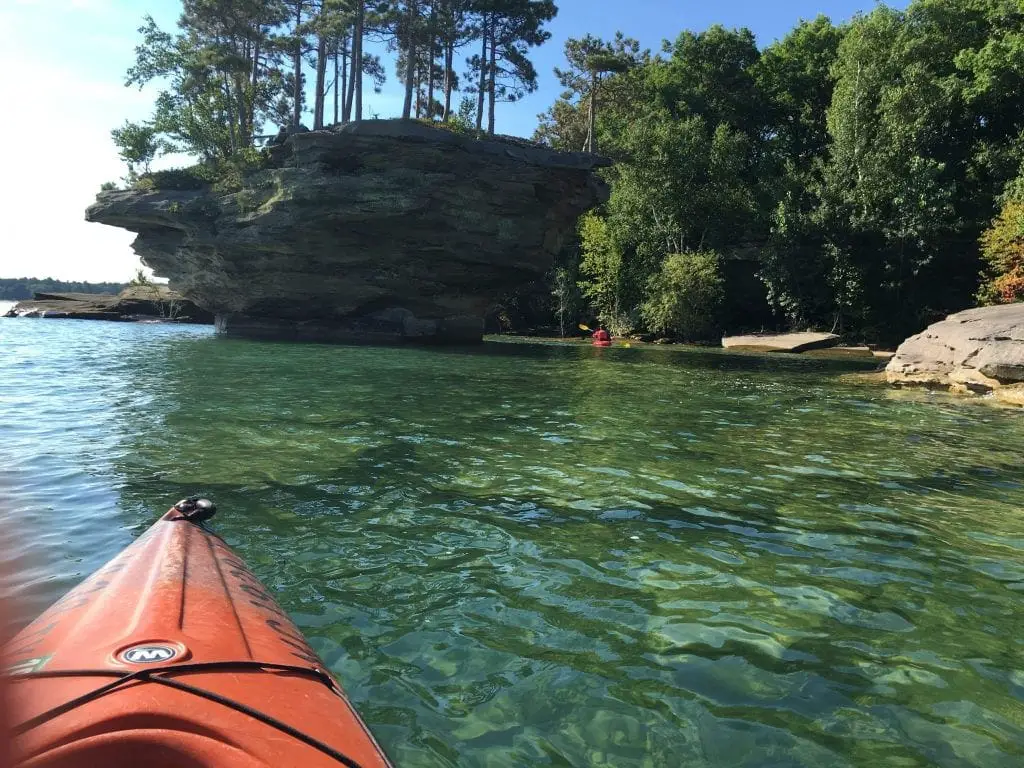

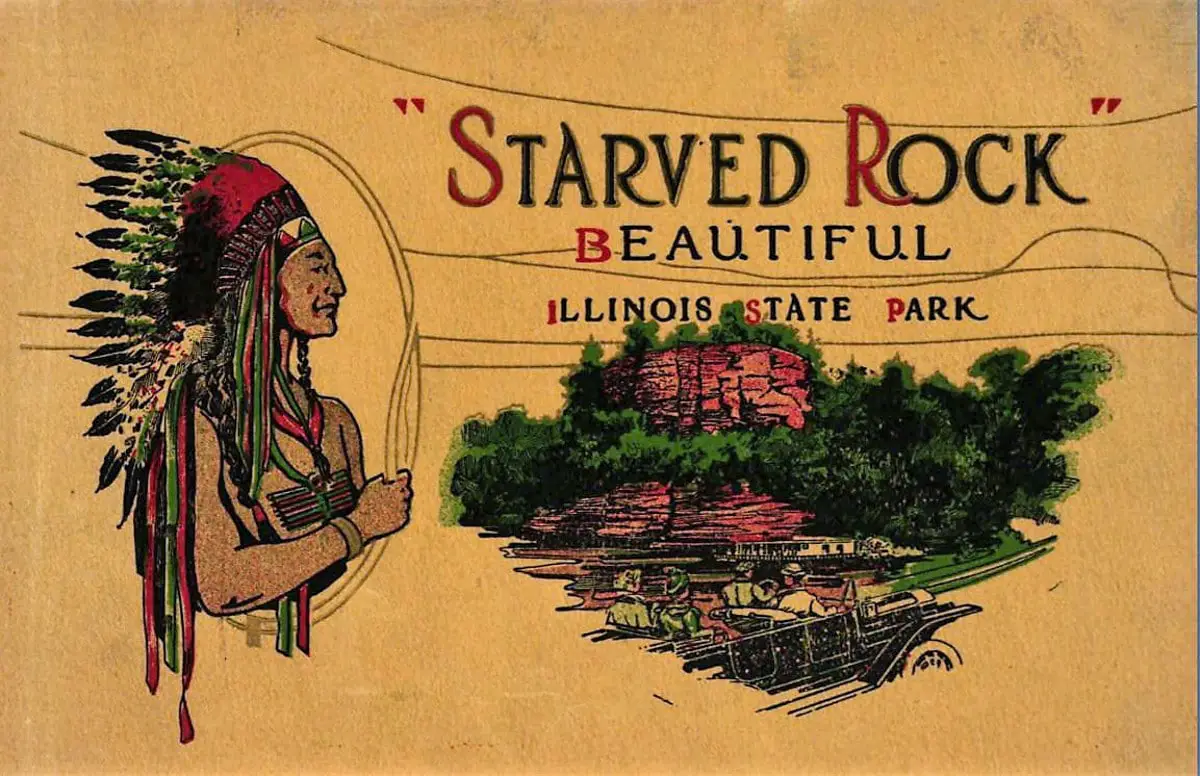

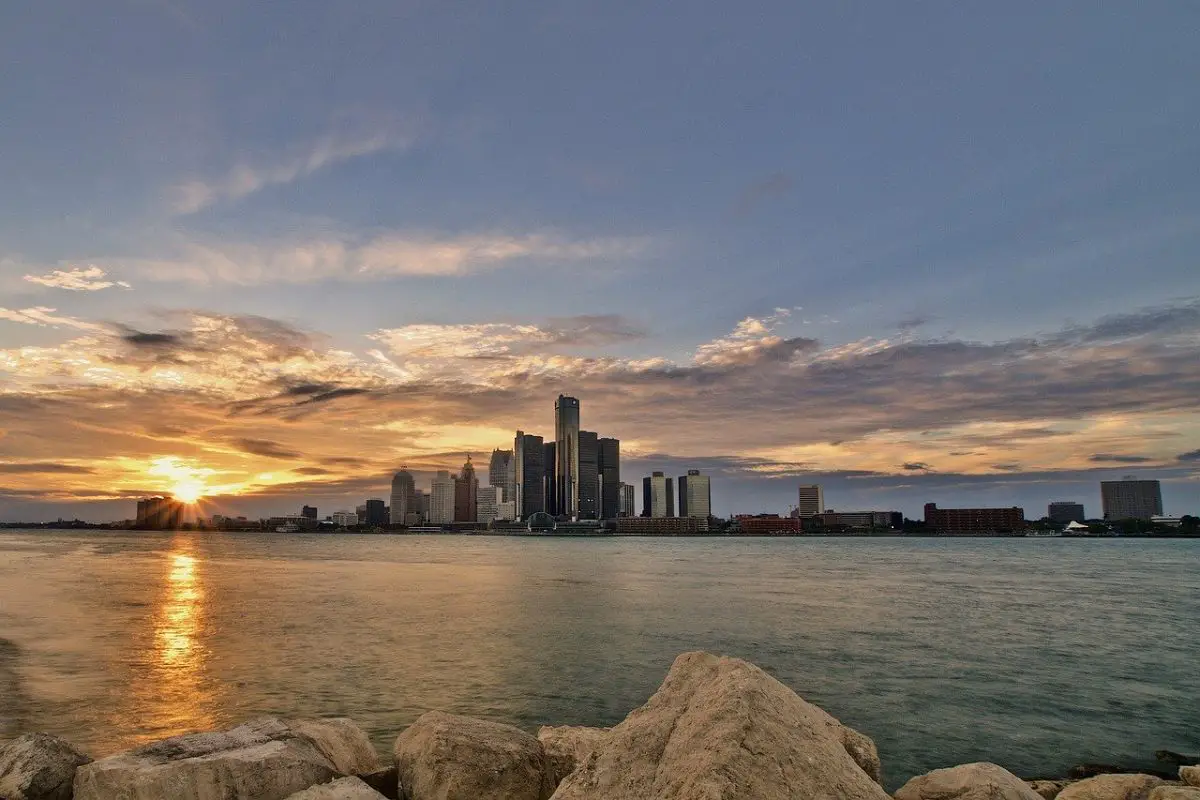


I enjoyed this very much. I learned history of a place that I never knew existed and wonderful snipits of video. Beautiful, thanks for sharing. Dot (Seva)
Thank you for the kind words.
As a transplant to Michigan from Illinois it was neat to see this article on my home state. A great park I have enjoyed in the past. Makes me want to go back and visit again.